- Plans with High Returns
- Claim Support Everyday
- Different Options Available
Become A Crorepati By Investing 10K/Month*
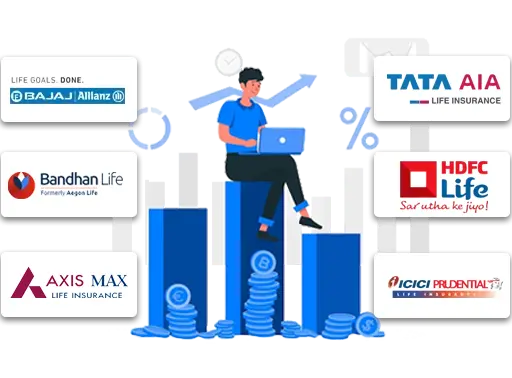
Become A Crorepati By Investing 10K/Month*
Become A Crorepati By Investing 10K/Month*


Buy Policy in just 2 mins

2 lakh + Happy Customers

Free Comparison
Become A Crorepati By Investing 10K/Month*
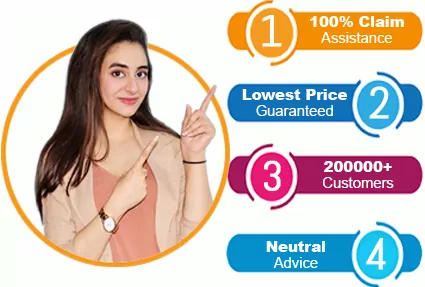


Term & Life Insurance
Himanshu is a content marketer with 2 years of experience in the life insurance sector. His motto is to make life insurance topics simple and easy to understand yet one level deeper for our readers.

Insurance & Business
Naval Goel, the founder of PolicyX is a well-recognised name in the Indian insurance and finance industry. His global overview has revolutionised the way insurance is perceived and bought by commoners in India.
Updated on Apr 08, 2025 4 min read
Investment plans are ideal if you are looking to build capital over time towards fulfilling short-term or long-term financial goals. These plans are designed in a way that a part of the premium paid is used to provide insurance coverage, while the remaining is invested in a financial instrument. The amount invested primarily depends on policyholders’ risk-taking capacity.
Investment is done with a financial goal that helps in generating income and accumulating a corpus over a period of time. These investments can include bonds, stocks, fixed deposits, provident funds, amongst others, which can substantially grow savings to act as a fall-back option upon retirement or for an additional source of income.
However, while our money grows, investments are generally accompanied by high risks. Market-linked investment plans tend to have a higher risk-return profile. Depending on how the stocks perform in unit-linked funds and income from bonds and deposits made, investors receive returns that they can use to cover financial obligations as they deem fit.

Top 3 Investment Plans

Types of Investment Plans

Best Investment Plans in India


Short and long-term goals such as child's marriage, education, retirement, etc. can be fulfilled if you carefully plan your investments
Returns on investment plans are usually better if you consider post-tax yields compared to other investment options (especially in Unit-Linked Insurance Plans)
You get a tax deduction for the premium you pay under Section 80C and the money you receive on maturity is tax-free under Section 10 (10) D of the Income Tax Act. Please note that different plans have different tax exemptions and you are advised to carefully evaluate the same.
You can add riders like Critical Illness, Accidental death, waiver of premium, etc.
You can also avail of a loan on the investments in case you need money at a later stage. The rate of interest differs from company to company.
You get the benefit of saving your money for future needs as well as increasing your wealth by investing in the stock market.


The table below lists some of the best investment plans offered by life insurers in India.
| Names of Investment Plans | Policy Term | Premium Payment | Entry Age | Maturity Age |
| HDFC Life Sanchay Plus | 15-25 years | Limited pay | 5-60 years | 18-80 years |
| SBI Life Smart Platina Assure | 12-15 years | Limited pay | 18-50 | Max 65 years |
| SBI Life Shubh Nivesh Plan | 10-30 years | Single / Regular pay | 18-60 years | 65 years |
| PNB MetLife Guaranteed Savings Plan | 10-20 years | Limited pay | 3-60 years | Max 80 years |
| Kotak SmartLife Plan | 75 years minus Entry Age | Limited pay | 3-55 years | 75 years |
**Last Updated on April, 2022
Look after your investment needs with the below-mentioned IRDAI approved Investment Plan companies.
Investing should be made a habit, especially if you are a young individual with a regular source of income. Be it a simple life insurance plan or a provident fund, ULIP, or a regular systematic investment plan, if you love seeing those extra zeroes in your account, you need to start planning.
The internet is swarming with information on various investment vehicles that you can leverage for a financially secure future. Let's discuss some of the best investment options available in India.
If you are on the lookout for a comprehensive option that covers insurance, wealth creation, and saves tax all in one, ULIP should be your priority. As a policyholder, you either pay a monthly premium or an annual premium. This premium amount is partly used for Life cover and part of it is invested in equity, bonds, debts, mutual funds, or other market funds.
An endowment plan pays out the sum assured in lump sum even if the policyholder survives the tenure of a plan. This plan sets you up for a huge amount upon maturity in addition to tax benefits.
ULIP vs Endowment Plans
| ULIPs | Endowment Plans |
| Chances of high returns but greater risks involved | Offers low but safer returns |
| Policyholders are aware of where their money is being invested | Opaque nature does not allow a purchaser to see where the money is being invested |
| Lots of flexibility and transparency | Guaranteed financial savings option with definite returns |
**Last Updated on April, 2022
Money-Back plans are a combination of insurance and investment. These plans offer death benefits in addition to a percentage of sum assured as returns at regular intervals.
You, as a policyholder, will pay premiums for a specified number of years, following which you will receive payouts periodically. The plan enables you to save for a few years and get the money back right when you need it. It is worth noting that the survival benefit comes with accrued terminal bonuses as well.
The oldest investment scheme known in India, fixed deposit is also one of the most convenient investment plans available to you. The principal amount deposited by you is free from any taxation policies and the rate of interest remains constant throughout the policy tenure. If you are averse to risks, this is your safest bet.
Customers can also avail of loans on fixed deposits. You are eligible to apply for a loan of up to 90% of the entire FD amount. But the tenure of a loan cannot be more than the fixed deposit tenure for obvious reasons.
However, of late, FDs have been losing their popularity due to reducing interest rates.
Bonds are a form of debt investment, wherein investors are given the opportunity to loan funds to banks or a government entity. The issuer is liable to pay you the debt with interest. However, interest received from government-issued bonds is taxable.
Introduced in 1968, PPFs continue to remain one of the most sought-after savings and investment vehicles in India even today. Attractive interest rates and tax-saving benefits are primary reasons why investing in a PPF has been the go-to option for most. Another factor that drives people to invest in it is the fact that the amount invested and the interest earned remains protected by the Indian sovereign.
Further, PPF allows withdrawal facilities from the 6th year of investment and a loan at a rate of 2% per annum above the interest paid can be availed from the 3rd to 5th year of investment.
Issued in denominations of Rs. 100, Rs. 500, Rs. 1,000, Rs. 5,000 and Rs. 10,000, NSC is an effective tax-saving investment instrument backed by the government of India. NSCs are paper-based deposits that are issued by the Post Offices when you make a suitable deposit. Compounded annually, the interest rate under NSC tends to change as per regulations put forth by the Ministry of Finance. NSC is a lucrative deal for the interest accrued is virtually tax-free. Further, there is no cap on the maximum amount that can be invested. Notably, NSCs can be used as collateral to acquire loans too.
The National Pension Scheme is probably one of the most underrated investment options in the country. Introduced as a specialized pension scheme solely for government employees, today this scheme extends to regular citizens as well. It is a long-term, post-retirement investment option managed by the Pension Fund Regulatory and Development Authority (PFRDA). NPS funds are exempted from taxation on withdrawals by the Direct Taxes Code.
It is an investment plan, wherein funds from investors are pooled by an Asset Management Company (AMC) that further invests it in bonds, equities, or securities. We will also quickly discuss Equity Mutual Funds and Debt Mutual Funds, both excellent investment options with high returns.
Under the equity mutual fund scheme, investors put their capital into the equity stocks of companies. Securities and Exchange Board of India (SEBI) has established certain guidelines pertaining to Mutual Fund Regulation. It mandates that an equity mutual fund scheme invest a minimum of 65% of its total assets in equity and related instruments.
Debt mutual fund schemes are suitable for those who wish for steady returns. These schemes mostly tend to be less volatile as compared to equity funds. Debt funds are primarily invested in corporate bonds, government securities, treasury bills, commercial paper, and other money market instruments, that generate a fixed interest.
It is important to note that debt mutual funds also carry risks related to interest rates and credit risks.
ELSS or Equity Linked Saving Schemes is currently the only tax-saving mutual fund option available. The entire invested amount under ELSS is tax-free. It has also one of the lowest lock-in periods, capped at three years, and requires a minimum investment of Rs. 500.
In financial terms, an investment that is done for a year is known as a short-term investment, whereas long-term plans are those which last for more than one year. In the table below, we have categorised the investment options discussed above into short-term investment plans and long-term investment plans.
| Investment Option | Tenure | Risk profile |
| ULIP | Mid-Long term | High |
| Endowment Plans | Short-Mid Term | Low-Moderate |
| Money-Back Plans | Short term | Moderate-High |
| Fixed Deposits | Short-Mid Term | No Risk |
| Bonds | Long-term | Low |
| PPF | Long Term | No Risk |
| NSC | Long term | Low |
| NPS | Long term | Low-High |
| Mutual Funds | Equity: Long Term Debt: Short-Mid Term |
Moderate-High |
| Tax Saving Mutual Funds | Mid-Long Term | Moderate-High |
**Last Updated on April, 2022


1. Accidental Death Riders can be availed if the policyholder dies in an accident. The insurance company is liable to pay the sum assured in addition to the rider benefit to the beneficiaries.
2. Permanent Disability Benefit Rider is a key add-on that covers the policyholder in the event that they suffer a permanent disability due to an accident.
3. Critical Illness Rider offers additional cover if the policyholder is diagnosed with pre-specified critical illnesses such as cancer, heart attack, kidney failure, stroke, paralysis, among others.
In the event that policyholders lose their income as a result of disability, Waiver of Premium ensures that all future premiums payable are waived off without affecting associated policy benefits.
4. Accelerated Death Benefit Rider covers terminal illnesses, such as AIDS, Cancer, Ebola, Leukemia, wherein a part of the sum assured is paid in advance and the remaining is paid to the nominee upon the death.
We have attempted to identify critical factors that you should compare before coming to a decision that effectively reflects your investment goals. Some of these factors are:
The amount of information available today is enormous. It is crucial that you filter out the most relevant options. To get the best investment option and the right amount of coverage, we suggest you take the help of online portals that allow you to compare investment plans from the comfort of your home. These portals present accurate quotes and the best prices to help you make the right investment.
Analyse Your Risk Profile
Find out how much you are willing to lose as a first step. If you are absolutely averse to risks and want guaranteed returns, you should opt for plans with a low-risk profile. However, if you are someone who can be patient with stock performance and are willing to wait to see your funds perform better, you should invest in market-linked financial instruments.
Decide on a Budget
Figure out an amount that you would have in excess at the end of each month. Start off with smaller investments where you can afford a couple of losses.
Determine your goals
It is important to have a purpose for your investments. Establishing whether it is a short-term goal or for long-term retirement planning or any other financial obligations is paramount. Once you figure out a financial goal, you will have a clearer picture of the plan to invest in.


In the case of the insured's death,nominees are advised to inform the insurer with important details such as time, place, and cause of death.
1. They are then required to submit documents and proof to the insurance company in the form of a death certificate of the Life Assured and the claim form.
2. There could be additional requirements such as post-mortem, hospital, and attending doctor's reports.
3. Cases involving police inquiries will need an investigation/survey report to be submitted.
4. After the investigation, the insurance company can choose to approve/disapprove the claim.
5. The details of the same will be shared with the claimant.
In case of plan maturity,policyholders are liable to receive benefits mentioned under the investment plan with accrued bonuses applicable against each plan. Investors are advised to approach their respective life insurance companies to file a claim.
Age Proof:
Birth Certificate, 10th or 12th mark sheet, Driving License, Passport, Voter ID, etc. (Anyone)
Identity Proof:
Driving License, Passport, Voter ID, PAN Card, Aadhar Card, which proves one's citizenship
Income Proof:
Income proof specifying the income of the person buying the insurance
Address Proof:
Electricity Bill, Telephone Bill, Ration Card, Driving License, Passport, should clearly mention the permanent address




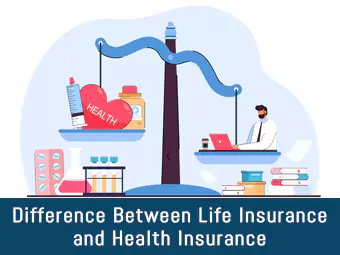

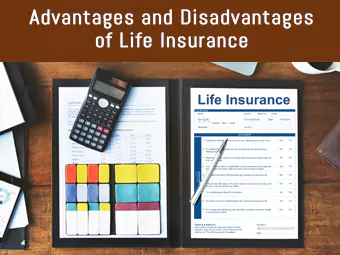
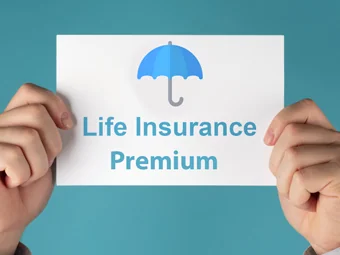




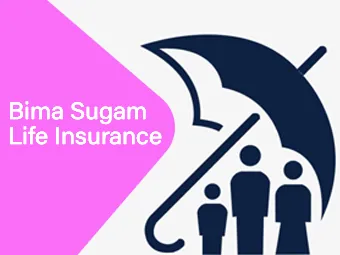



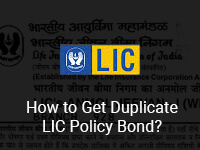
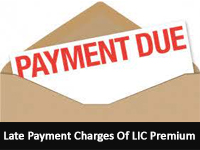


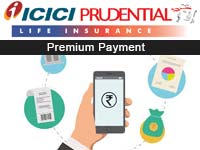
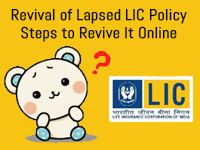
See More Life Insurance Articles
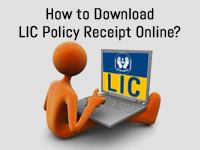





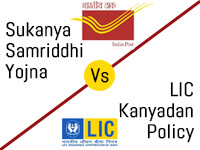



See More Life Insurance Articles
The risk profile of investment plans varies according to the type of fund and the investment objectives. For your information, mutual funds are effective in weathering inflation in the long-term.
Several unit-linked plans allow investors to withdraw a part of the funds invested to help cover financial exigencies. This is an instance of partial withdrawal.
Several endowment plans guarantee a high sum assured. However, you might want to diversify your investments or focus on asset allocation to get higher returns and also manage risks.
Low risk investment plans: Fixed deposits, PPF, NPS, Senior Citizen Savings Scheme, RBI Taxable Bonds
Moderate Risk Investments: Arbitrage funds, Hybrid debt-oriented plans, and monthly income plans
High Risk Investments: ULIPs, Debt and Equity Mutual Funds, Direct Equity
Amar Patil
Pune
October 9, 2024
I want to thank Shubham Sharma for his exceptional help with my term insurance query. He went above and beyond to assist me. I’m very grateful to Policyx.com and Shubham Sharma.
Sanjeev
Hyderabad
May 20, 2024
SUD Life term plan truly stands out my expectations as I got SUD Life term plan along with additional riders at very affordable premiums.
Sumit
Coimbatore
May 20, 2024
I am impresses with the hassle free and quick claim settlement process of SUD Life. Thanks to PolicyX who guided me to get my claim settled.
Barkha
Delhi
May 20, 2024
Bought SUD Life Family Income Benefit Rider plan to secure the future of my plan financially even in my absence.
Geetanjali
Kolkata
May 20, 2024
I was looking for a term plan to secure the future of my family. So I contacted PolicyX and one of their representatives Mr. Vaibhav helped me choose SUD Life term plan.
Armaan khan
Agra
May 17, 2024
I recently purchased a Pramerica term insurance policy from Policyx.com. The customer service team was very helpful in answering all my queries and guiding me through the application process. I...
Rahul Yadav
Indore
May 17, 2024
PolicyX’s dedicated support made renewing my Bandhan Life Insurance policy easy. I’m absolutely delighted with the service offered by PolicyX Insurance Advisor.
Priyanshu Sharma
Delhi
May 17, 2024
I bought a Bandhan Life Insurance through PolicyX, and I must say the level of communication and assistance I have received has been truly impressive.

 ✖
✖
Our experts will provide you with guidance and address all your concerns within 30 minutes.
Note: Choose your desired date and time slot and our expert will get in touch with you shortly.


In case you have not found your desired slot, you can visit at website and use the Request Call Back option.
You are just one step away from getting insurance.

Policyx offers a completely spam-free experience. We will never contact you unless you request us to do so.
Your call has been scheduled with Policyx for term insurance.
Talk to an advisor
February 5, 2023
Asia/Kolkata